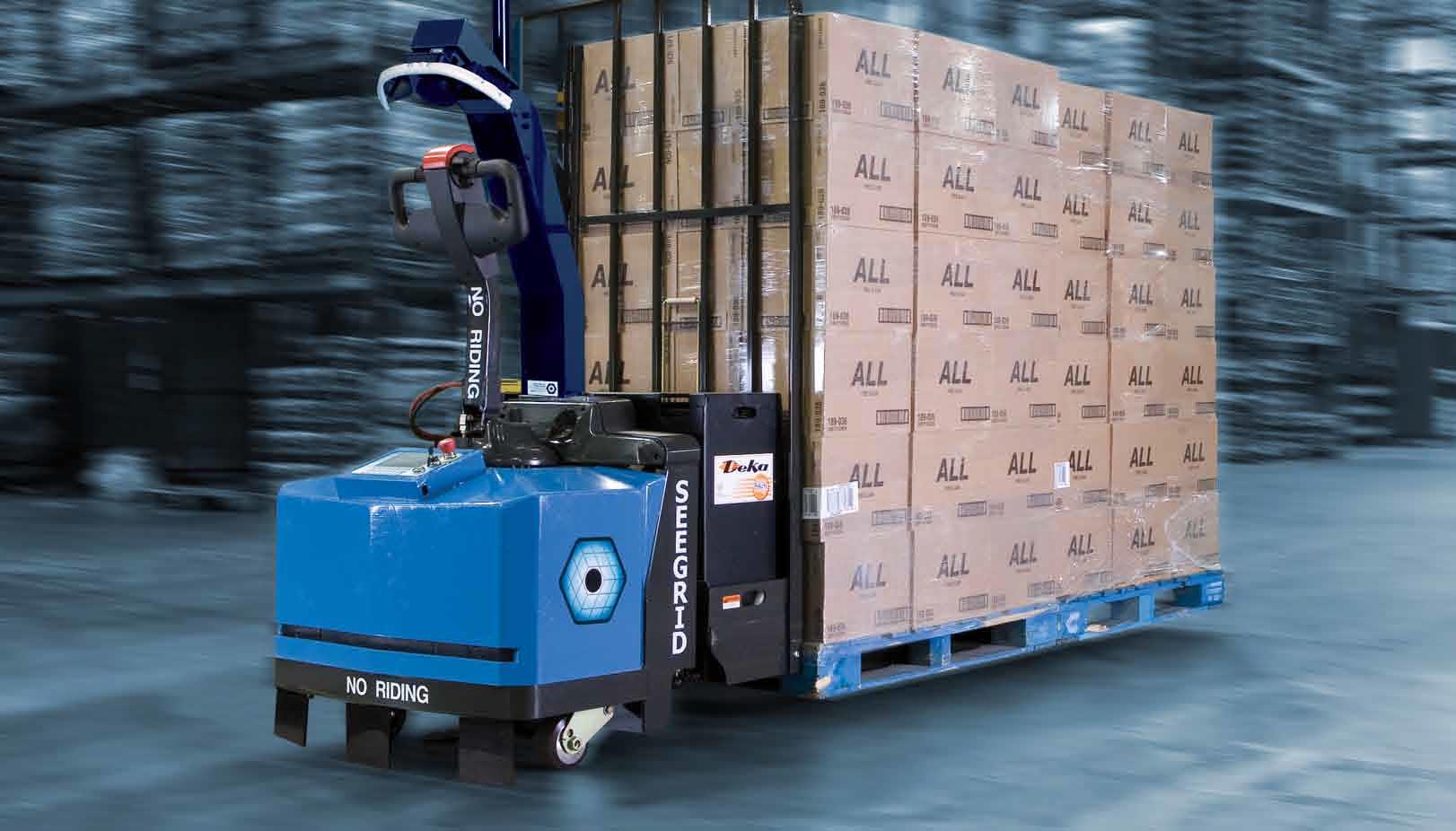
Vision-guided robotic trucks are a better solution than expensive automated guided vehicle systems (AGVs), says Thomas R. Cutler, especially when you don’t need all the bells and whistles.
YUSA Corporation is based in Washington Court House, Ohio, and is determined to grow and satisfy its customer base. The executives at YUSA were looking for ways to gain efficiencies when moving raw materials to production and finished goods to the warehouse.
Following in the footsteps of the Yamashita Rubber Company, YUSA Corporation has become an industry leader in the manufacture of automotive rubber components, specializing in engine mountings (conventional and hydro), bushings, tubes and hoses. Its customer base includes Honda of America Mfg., Honda of Canada Mfg., Mitsubishi Motors North America, General Motors Corporation, Ford Motor Company and numerous others in the North American Market.
A clear lean objective of the company was to improve service levels for customer shipments and increase customer satisfaction. The company deployed Seegrid Robotic Industrial Trucks and developed specific measurable impacts, including ease-of-use, avoidance of training and costly maintenance practices, flexibility of route selection, familiarity with existing equipment types (forklifts and pallet jacks), along with workforce acceptance, labor savings and general comfort working alongside manned equipment.
“The warehouse group took to the robotic industrial truck right away when they saw how it helped with their workload,” said John Welling, plant manager for YUSA Corporation. “On the manufacturing side, an unexpected secondary benefit is that we removed clutter and unsightly pallets from the work areas so the trucks can maneuver, providing a cleaner, safer work environment. Additionally, two full-time material handling associates have been reassigned to areas where they can provide a greater impact to our manufacturing efforts.”
Many companies can neither afford nor require all the bells and whistles of an enterprise-wide AGV (automated guided vehicle.) The robotic forklift solution is far more affordable and produces a rapid return-on-investment. The reduced labor costs means that full-time employees are reassigned to value-added work activities and reduced maintenance costs allow employees to perform routine maintenance and trouble shooting.
Unlike the costly AGV solutions, the robotic industrial trucks require no facility change; they were set up in less than one hour at YUSA. There is also less manual labor, controlled travel speeds and a system driven workflow that promotes consistent safe behavior.
Pittsburgh-based Seegrid, developer and manufacturer of robotic forklifts for industry and warehouse stocking, is expanding for a second time. Seegrid is renovating another 10,000 square-feet next to its 30,000 square-foot location in RIDC Park West, adding space for a fast-growing engineering department and lab.
“Earlier this year, Seegrid formed partnerships with Raymond Corp (a division of Toyota) and Linde Material Handling (a subsidiary of the KION Group), two of the largest forklift manufacturers in the world,” said Scott Friedman, founder and CEO. “The deal is rapidly moving Seegrid's vision-guided robotic technology into an expanded world market.”
Saving time and money, and improving efficiency, these robotic industrial trucks are combined with distribution center, warehouse, and plant order selection devices and a WMS (warehouse management system). This integrated solution improves the efficiency of workflow processes and increases accuracy of pick and productivity.
The impact of optimizing supply chain management business processes includes reduced non-value-added manned travel, continuous worker motion, improved order focus, seamless WMS integration, consistent safe practices, less idle time and optimized shift productivity. Adoption of robotic industrial trucks happens quickly because everyone on the plant floor is familiar with the truck platform.
The putaway solution is an important element in vision-guided robotic industrial trucks because it improves operational efficiencies by reducing manned travel time and enables companies to increase customer service levels. This is accomplished by effectively managing inbound activities and maintaining the velocity for downstream activities.
The ability to minimize dock-to-stock cycle time reduces per shift labor costs, optimizes shift productivity, and decreases seasonal staffing, making putaway practices much easier to achieve. The familiar truck platform eliminates fear and resistance from employees.
End-of-line solutions from vision-guided robotic industrial trucks supply a consistent transport of finished goods from production to shipping, which optimizes delivery schedules, maintains order velocity and ensures that orders ship on time. “Decreasing the cost of moving product throughout the facility increases labor efficiency and enhances lean flow as our clients continuously improve operations,” said Friedman.
The human body was never designed to move pallets. The next best thing was a pallet jack and then a forklift.Today, the material handling industry knows unmanned horizontal moves are the most effective way to save money and increase productivity: The material handling industry is adopting the newest and affordable way to handle horizontal moves.
Pallet Jack makes sense for pallet moves within a warehouse, distribution center or manufacturing facility and a towing attachment is best for moving carts, pallets and supplies to and from a desired location at the touch of a button. A tow tractor is often used for tugging or towing flatbed cars, trains or carts continuously and reliably throughout an operation.
From these equipment platforms come savings, productivity, safe operating practices, and overall improvements to the bottom line. The robotic industrial trucks will continue to capture most of the market share (versus high-end AGVs) because they deliver the benefits, labor strategies, worker improvement techniques, and productivity improvements required at a much lower price point.
* * *
Thomas R. Cutler is President & CEO of Fort Lauderdale, Florida-based, TR Cutler, Inc, (www.trcutlerinc.com). Cutler is the founder of the Manufacturing Media Consortium of more than four thousand journalists and editors writing about trends in manufacturing, distribution, material handling, and industry. Cutler can be contacted at trcutler@trcutlerinc.com or 888-902-0300.












